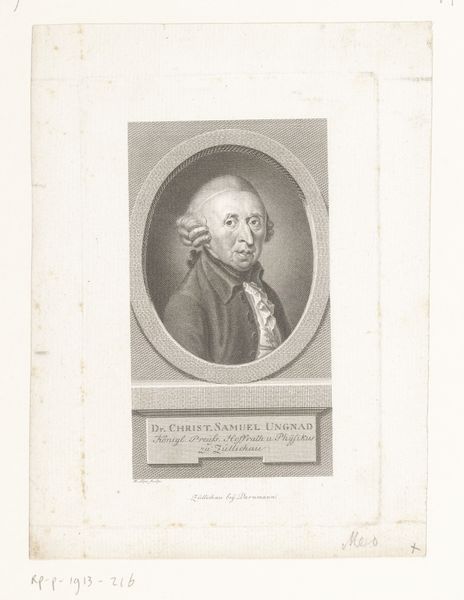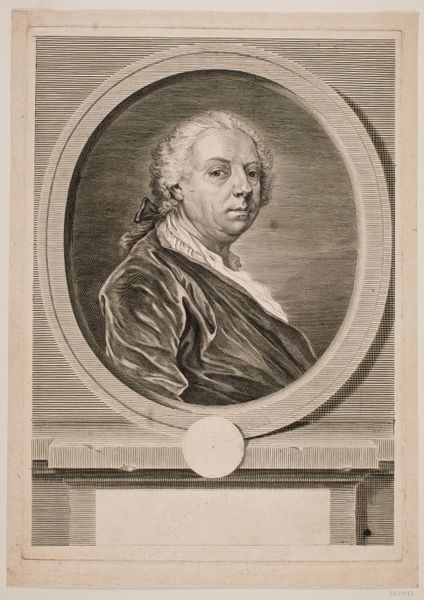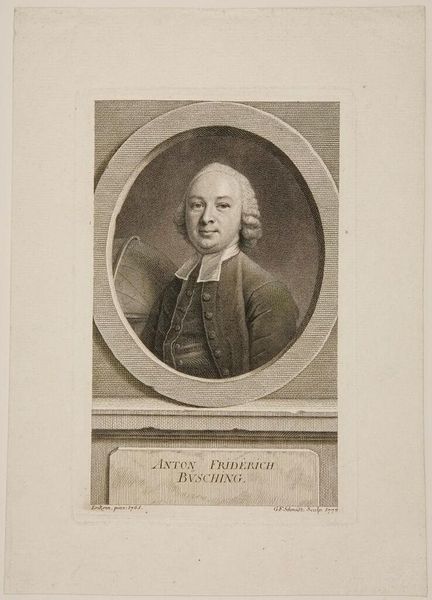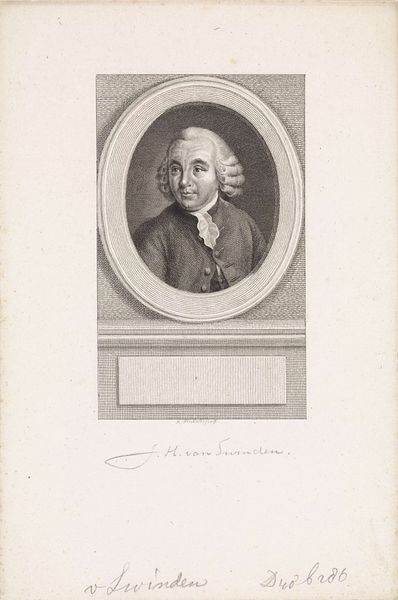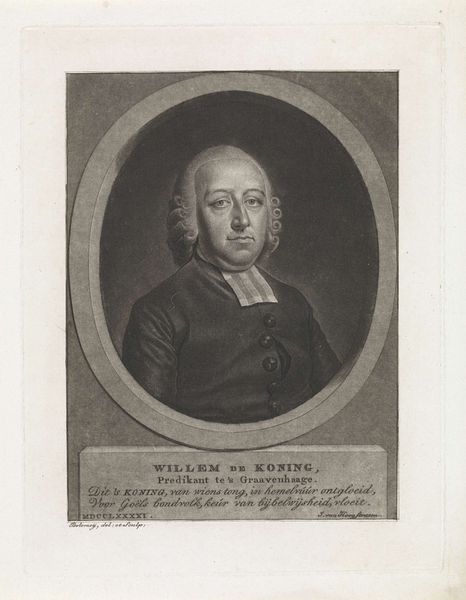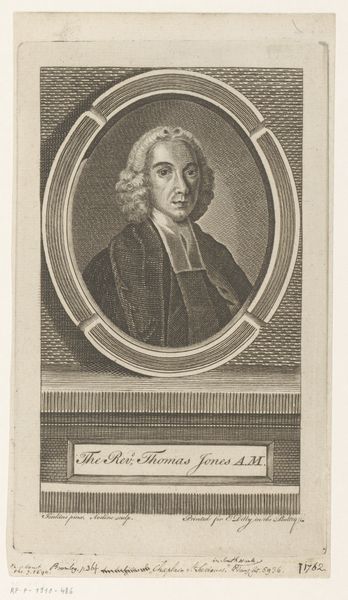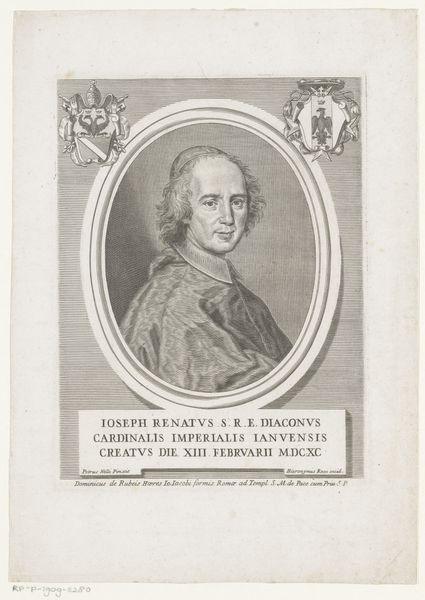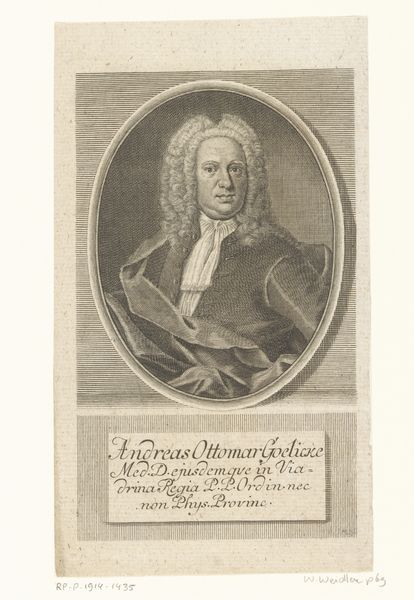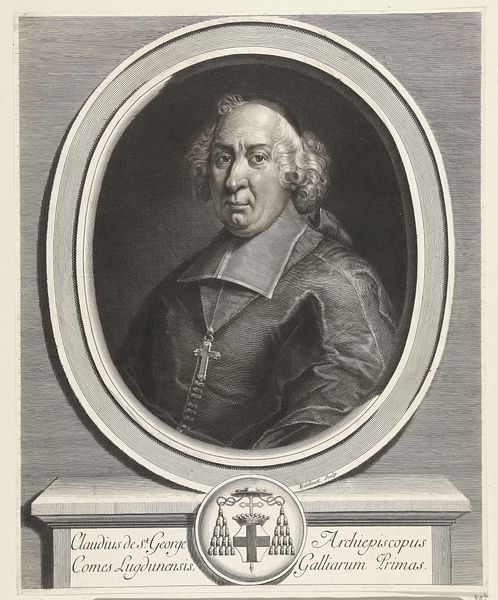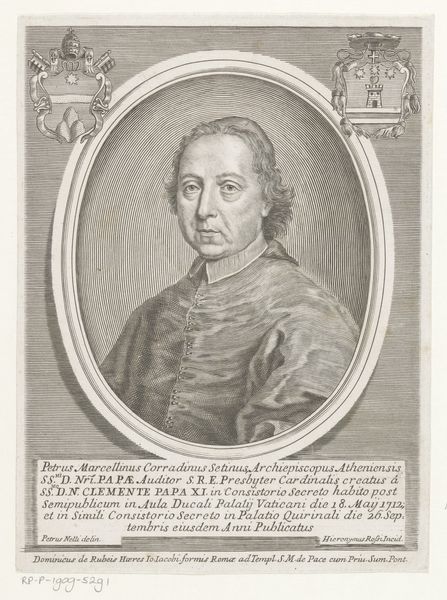
#
aged paper
#
yellowing background
#
photo restoration
#
parchment
#
old engraving style
#
film poster
#
historical photography
#
old-timey
#
yellow element
#
golden font
Dimensions: height 158 mm, width 91 mm
Copyright: Rijks Museum: Open Domain
Editor: We’re looking at a portrait of Antonio Francesco Gori, an engraving by Johann Martin Bernigeroth, from 1746. I find it quite formal, very much of its time. All those lines! How would you describe it, looking at it purely from a visual perspective? Curator: It's fascinating how Bernigeroth employs line to define form. Notice the density and direction of the hatching. Around the face, these minute parallel strokes create not just shadow, but volume. Observe, too, how the artist uses contrasting densities to describe the textures, from the subject's smooth skin to the drapery of his robe. The very artifice of the engraving technique, those deliberate lines, speak volumes. Editor: So, it’s all about the lines and their arrangement? What about the oval frame and the text beneath the portrait? How do those elements factor in? Curator: Precisely. The oval functions as a contained field, intensifying our focus on the figure’s physiognomy. The inscription, a textual plane, creates a clear structural division while informing us about the sitter’s identity and station. The geometry dictates how we perceive it. We are guided purely through compositional arrangement. It speaks to the organizational structures the artist deemed necessary. Editor: It's interesting how the formal constraints become expressive in their own right. Thank you! Curator: Indeed. It reveals how much an artist can communicate solely through the control and manipulation of basic formal elements.
Comments
No comments
Be the first to comment and join the conversation on the ultimate creative platform.
